

Fantasticat - What are you fantasticat? - Fantasticat teaching, learning, personal development ideas. What is Active Learning? Values - Vision. Learning, powered by imagination. - Memrise. Mango Languages.
Games based learning - Resources. Last Updated:8 November, 2012Section:Resources Classroom games Welcome to the Games-based learning collection of resources.
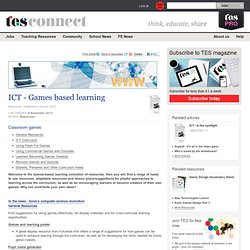
Here you will find a range of ready to use resources, adaptable resources and lesson plans/suggestions for playful approaches to learning across the curriculum, as well as for encouraging learners to become creators of their own games. Why not contribute your own ideas? In the news - Gove’s computer science revolution General Resources. Tutorials. FutureLearn — Learning for Life.
400 Free Online Courses from Top Universities. Advertisment Take online courses from the world’s top universities for free.
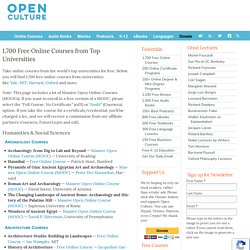
Below, you will find 1,700 free online courses from universities like Yale, MIT, Harvard, Oxford and more. Our site also features collections of Online Certificate Programs and Online Degree & Mini-Degree Programs. Note: This page includes a lot of Massive Open Online Courses (MOOCs). If you want to enroll in a free version of a MOOC, please select the “Full Course, No Certificate” (edX) or “Audit” (Coursera) option. 12 Dozen Places To Educate Yourself Online For Free. Free Online Course Materials. Free Online Courses. Advance your College Education & Career. Social Media for Learning: A Balanced Approach. Four Phases of Learning. The Myth Of Learning Styles. The Learning Landscape Model by Dr. Will Thalheimer.
Khan Academy. Coursera. Angela Lee Duckworth: The key to success? Grit. Learningtheories-full.jpg (JPEG Image, 1614 × 1145 pixels) - Scaled (57%) - Create a Culture of Questioning and Inquiry. 4 Comments August 14, 2013 By: Guest Blogger Nancy White Aug 13 Written by: 8/13/2013 6:00 PM ShareThis I have often suggested to teachers that when students have access to technology, whether it is provided by the school in a 1:1, BYOD, or simply the smart phone in their pocket, there should never be a question that goes unanswered –or un-followed.

What I discovered in the 300+ observations I have done for our 21st Century Learning grant work was that the problem isn’t necessarily about allowing time for students to answer questions. As the new school year begins, think about how you might begin to shift from a culture of compliance, to a culture of questioning in your classroom. Ask: “What do you wonder?” This seems like a simple thing to do – and it is! Question wall I found these in several classrooms I visited recently. Question journal Get students in the habit of collecting questions in a journal – paper or electronic. Question Formulation Technique Inquiry days. Dan Pink: How Teachers Can Sell Love of Learning to Students. By Jennie Rose In his new book To Sell is Human, author Daniel Pink reports that education is one of the fastest growing job categories in the country.
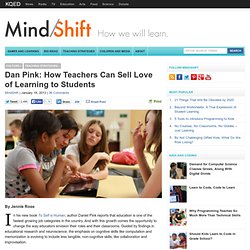
And with this growth comes the opportunity to change the way educators envision their roles and their classrooms. Bill Gates: A fairer way to evaluate teachers. In much the same way that sports teams identify and nurture talent, there is a window of opportunity in public education to create systems that encourage and develop fantastic teachers, leading to better results for students.

Efforts are being made to define effective teaching and give teachers the support they need to be as effective as possible. But as states and districts rush to implement new teacher development and evaluation systems, there is a risk they’ll use hastily contrived, unproven measures. One glaring example is the rush to develop new assessments in grades and subjects not currently covered by state tests. Revolution Hits the Universities. Last May I wrote about Coursera — co-founded by the Stanford computer scientists Daphne Koller and Andrew Ng — just after it opened.

Two weeks ago, I went back out to Palo Alto to check in on them. When I visited last May, about 300,000 people were taking 38 courses taught by Stanford professors and a few other elite universities. Today, they have 2.4 million students, taking 214 courses from 33 universities, including eight international ones. Anant Agarwal, the former director of M.I.T.’s artificial intelligence lab, is now president of edX, a nonprofit MOOC that M.I.T. and Harvard are jointly building. Agarwal told me that since May, some 155,000 students from around the world have taken edX’s first course: an M.I.T. intro class on circuits. Yes, only a small percentage complete all the work, and even they still tend to be from the middle and upper classes of their societies, but I am convinced that within five years these platforms will reach a much broader demographic.
Learning for everyone, by everyone, about almost anything. Fostering Open Learning Grounded in Co-Creation, Peer-to-Peer Support. A Few Moments with Philipp Schmidt Philipp Schmidt is widely recognized as a leading thinker and advocate for open learning and for helping to jumpstart the open education movement in the early 2000s.
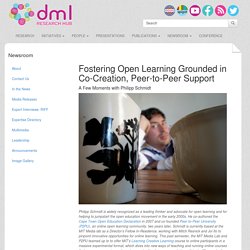
Learning from Mobile Computing and the Impacts on Campus - SCUP's Planning for Higher Ed Mojo. From wired to wireless, mobile computing is changing how students, faculty, and staff connect with the university and each other.
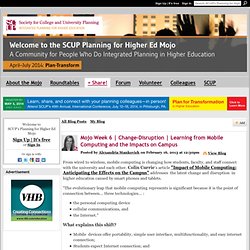
Colin Currie's article "Impact of Mobile Computing: Anticipating the Effects on the Campus" addresses the latest change and disruption in higher education caused by smart phones and tablets. "The evolutionary leap that mobile computing represents is significant because it is the point of connection between... three technologies... Charles Limb: Your brain on improv.
In Action. We have been writing the missing manual for peer-produced peer learning – the “Peeragogy Handbook” (peeragogy.org).
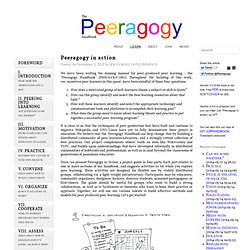
Throughout the building of this work, we, ourselves peer learners in this quest, have been mindful of these four questions: How does a motivated group of self-learners choose a subject or skill to learn? How can this group identify and select the best learning resources about that topic? 10 places where anyone can learn to code. Teens, tweens and kids are often referred to as “digital natives.”
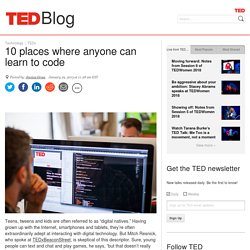
Having grown up with the Internet, smartphones and tablets, they’re often extraordinarily adept at interacting with digital technology. But Mitch Resnick, who spoke at TEDxBeaconStreet, is skeptical of this descriptor.